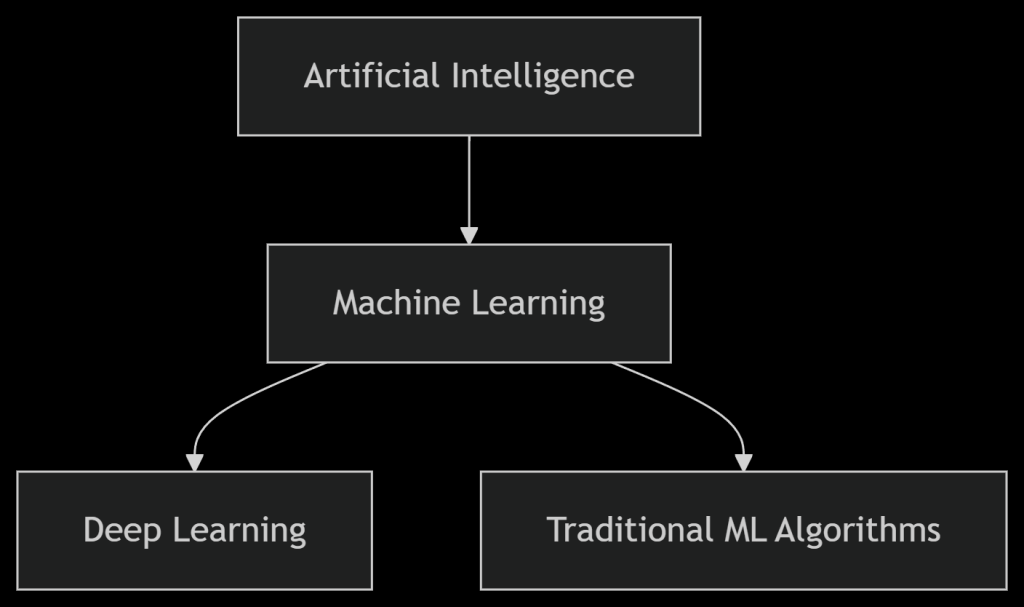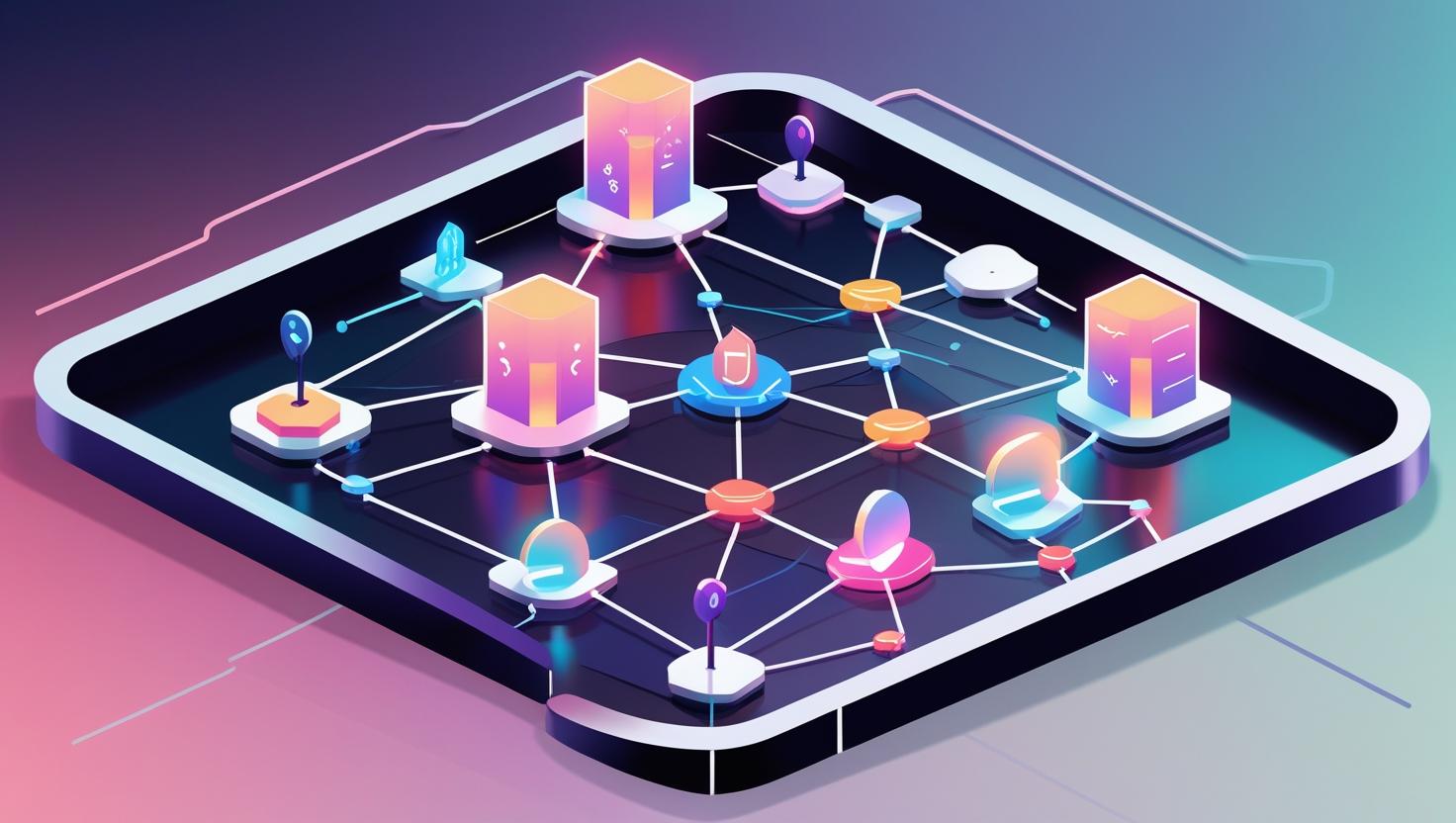Deep Learning (DL) is a subset of Machine Learning (ML), which itself is a subset of Artificial Intelligence (AI). They share similarities but differ in complexity, data requirements, and applications.
1. How They Relate
Hierarchy

- Machine Learning (ML): Uses algorithms to learn patterns from data (e.g., decision trees, SVM).
- Deep Learning (DL): Uses neural networks with multiple layers to model complex patterns (e.g., CNNs, Transformers).
Key Similarities
✔ Both learn from data (supervised/unsupervised/reinforcement learning).
✔ Used for tasks like classification, regression, and clustering.
✔ Require training and evaluation metrics (accuracy, loss).
2. Key Differences
| Feature | Machine Learning (ML) | Deep Learning (DL) |
|---|---|---|
| Data Needs | Works with small/medium datasets | Requires massive data (e.g., 1M+ images) |
| Feature Engineering | Manual (experts define features) | Automatic (neural nets extract features) |
| Hardware | CPU/light GPU | High-end GPUs/TPUs (e.g., NVIDIA A100) |
| Interpretability | Easier (e.g., decision tree rules) | Harder (“black box” models) |
| Training Time | Minutes-hours | Hours-weeks |
| Use Cases | Fraud detection, recommendation systems | Image/voice recognition, self-driving cars |
3. When to Use Which?
Choose Machine Learning If:
- You have structured data (tables, CSV).
- Your dataset is small (<100K samples).
- You need interpretability (e.g., credit scoring).
Example Algorithms:
- Linear Regression
- Random Forest
- XGBoost
Choose Deep Learning If:
- You have unstructured data (images, audio, text).
- Your dataset is large (millions of samples).
- You need state-of-the-art accuracy (e.g., GPT-4, Tesla Autopilot).
Example Models:
- CNNs (for images)
- RNNs/LSTMs (for time series)
- Transformers (for NLP)
4. How They Work Together
- Step 1: Use ML for preprocessing (e.g., PCA for dimensionality reduction).
- Step 2: Feed processed data into DL models for higher accuracy.
- Example:
- ML: Extract features from text (TF-IDF).
- DL: Train a BERT model on those features.
5. Real-World Applications
| Field | Machine Learning | Deep Learning |
|---|---|---|
| Healthcare | Disease prediction (logistic reg) | MRI tumor detection (CNN) |
| Finance | Fraud detection (Random Forest) | Algorithmic trading (LSTM) |
| Retail | Recommendation systems (k-NN) | Visual search (ResNet) |
6. Future Trends
- Hybrid Models: ML + DL (e.g., AutoML for hyperparameter tuning).
- TinyML: DL on edge devices (e.g., smartphones).
- Self-Supervised Learning: Reducing DL’s data hunger.


